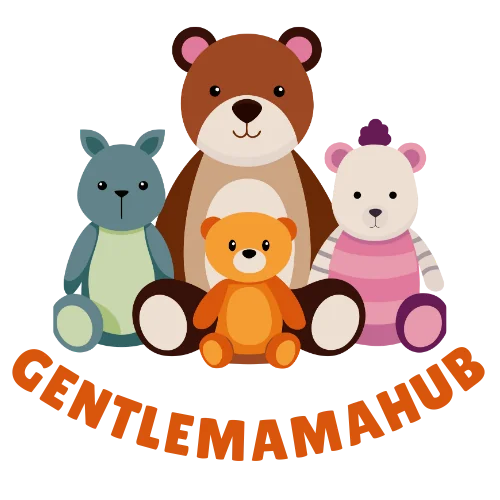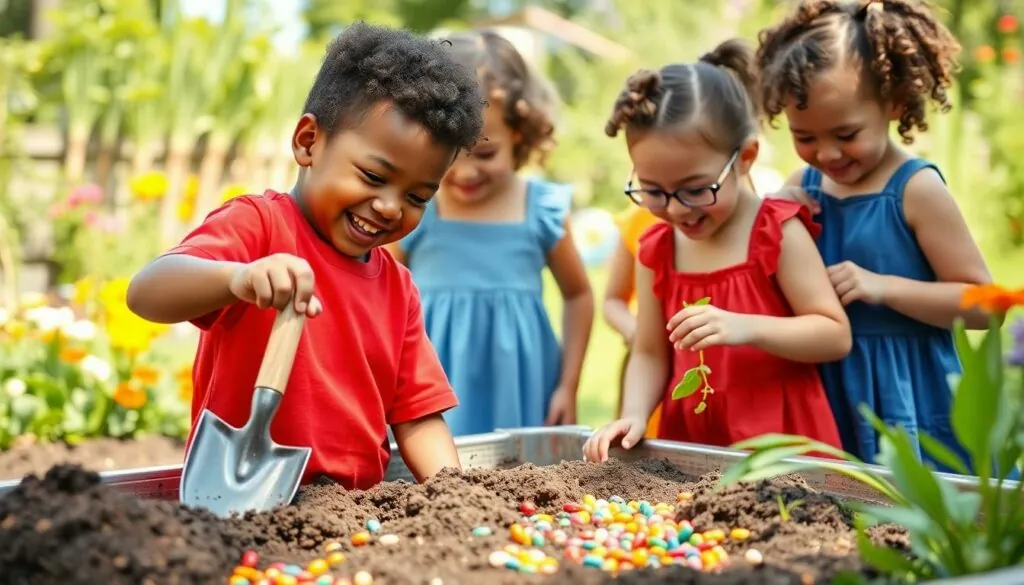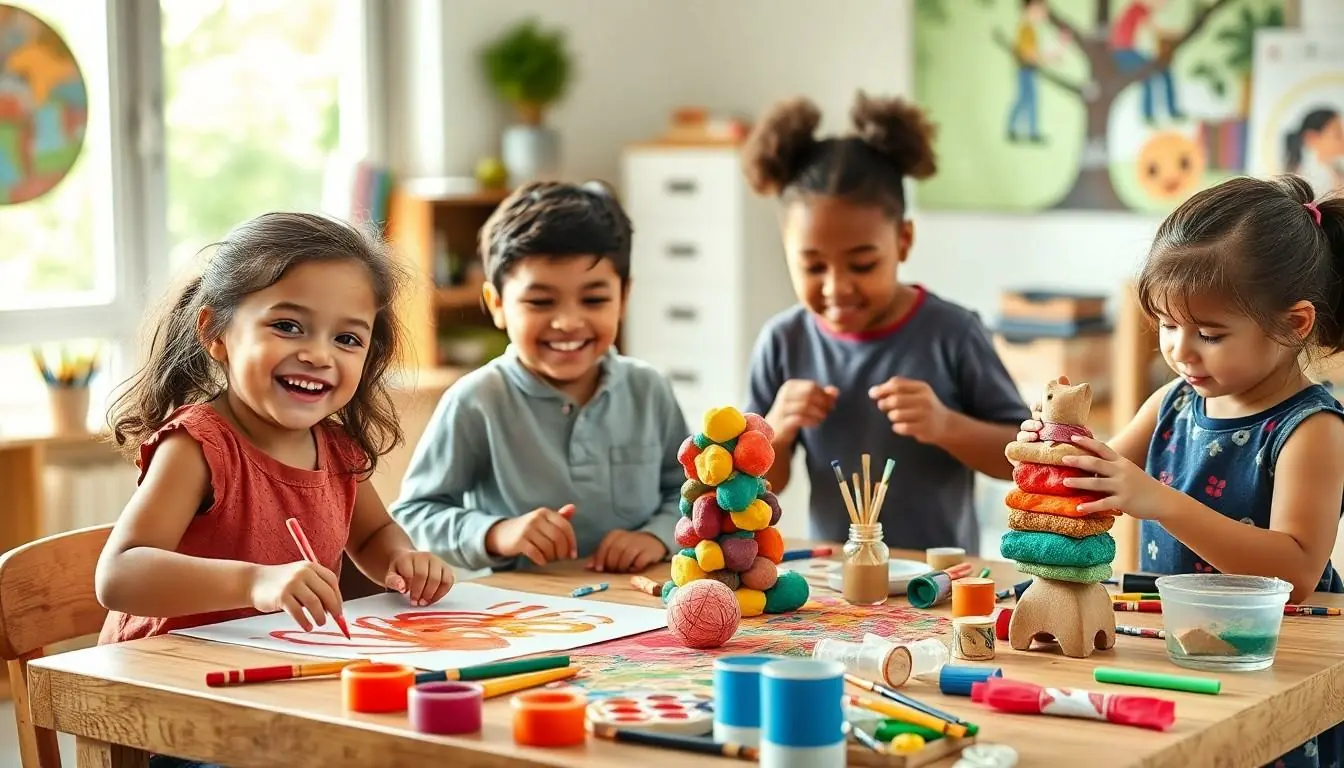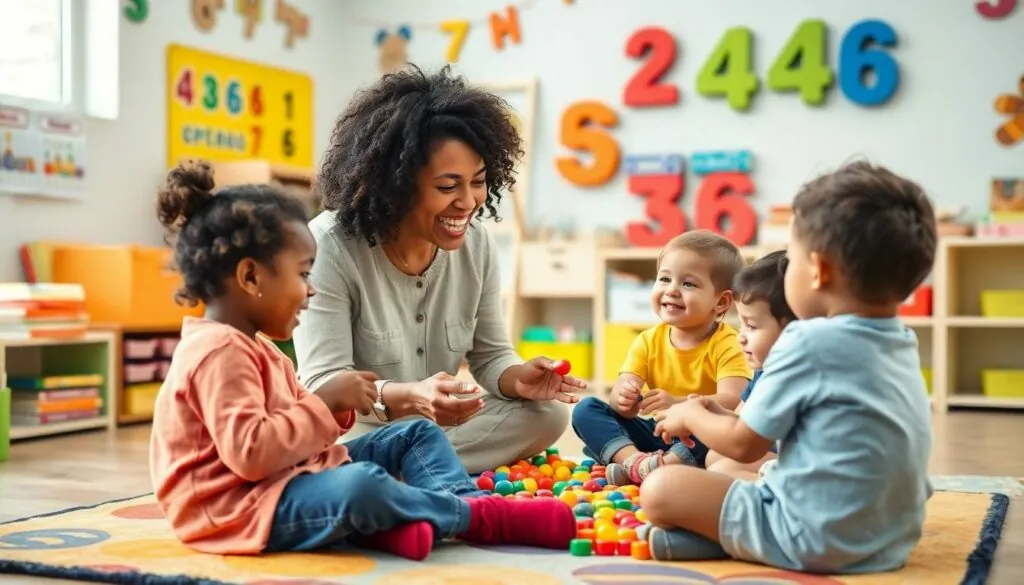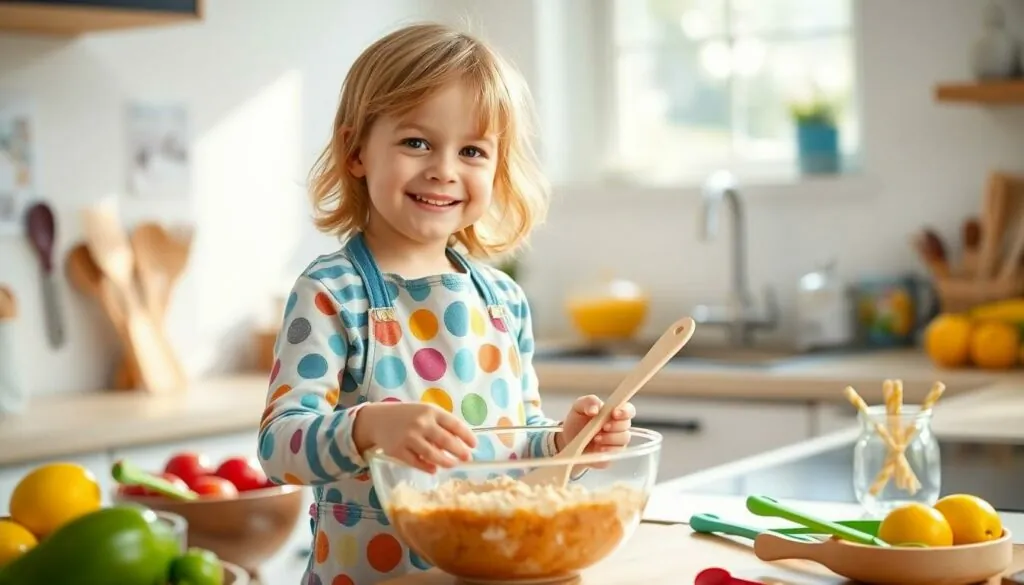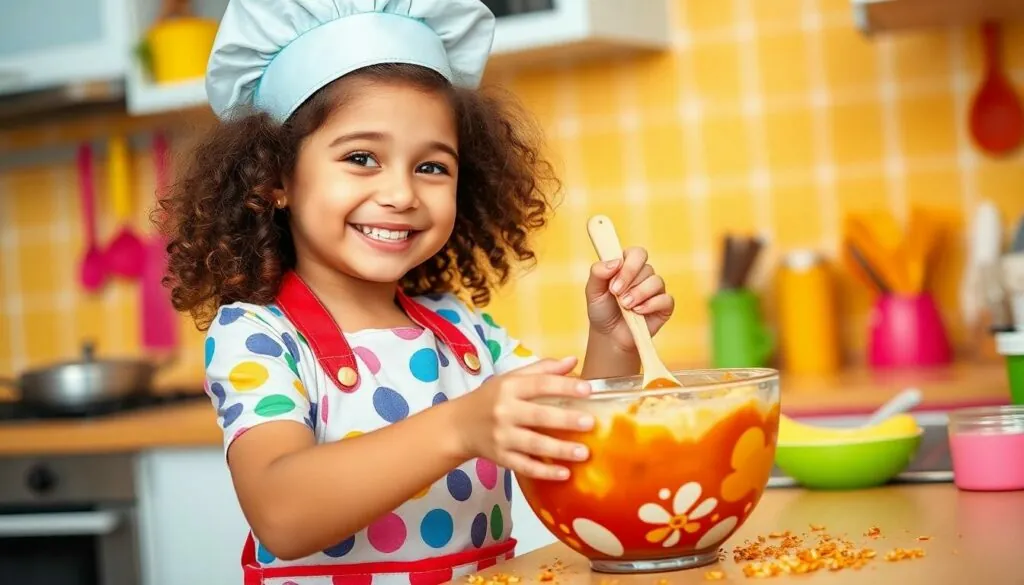Table of Contents
ToggleThe early years of childhood burst with endless possibilities for learning through play. From finger painting masterpieces to building block cities preschoolers thrive when they’re engaged in activities that spark their imagination and creativity.
Finding the right mix of educational and entertaining activities can feel overwhelming for parents and teachers. But there’s no need to stress – the secret lies in simple yet engaging activities that combine learning with pure joy. Whether it’s exploring science through sensory bins or developing motor skills with outdoor games these activities help little minds grow while keeping those precious smiles bright.
Before diving into specific activities it’s important to remember that preschoolers learn best when they’re having fun. The key is to create an environment where curiosity leads to discovery and where every activity feels like playtime rather than a lesson.
Essential Benefits of Preschool Activities
Preschool activities form the foundation for early childhood development by combining structured learning with play-based exploration. These activities create opportunities for children to develop essential life skills through engaging experiences.
Physical Development Benefits
Preschool activities enhance gross motor skills through climbing playground equipment, running obstacle courses & throwing balls. Fine motor development progresses as children manipulate crayons, scissors & playdough during art activities. Regular movement activities strengthen muscle coordination & balance through activities like hopping, skipping & dancing. Indoor activities like threading beads & building with blocks improve hand-eye coordination & finger dexterity. Outdoor play builds stamina & spatial awareness when children navigate climbing frames, ride tricycles & play group games.
Cognitive Growth Through Play
Structured play activities boost problem-solving abilities through puzzles, pattern matching & sorting games. Children develop number sense by counting objects, measuring ingredients & playing board games. Language skills expand during storytelling, puppet shows & dramatic play scenarios. Memory improvement occurs through sequence activities, matching games & recall exercises. Critical thinking emerges as children experiment with cause-effect relationships in water play, construction activities & simple science experiments.
| Developmental Area | Key Activities | Skills Enhanced |
|---|---|---|
| Physical | Climbing, Drawing, Dancing | Motor Skills, Balance |
| Cognitive | Puzzles, Counting, Stories | Problem-solving, Memory |
Creative Arts and Crafts Projects
Creative arts enhance preschoolers’ self-expression abilities while developing fine motor skills essential for writing readiness. These hands-on activities foster imagination exploration through various mediums.
Painting and Drawing Activities
Preschoolers express creativity through multiple painting techniques including finger painting, brush work, sponge art, marble rolling art. Setting up dedicated art spaces with washable paints, large paper sheets, non-toxic markers enables safe experimentation. Children discover color mixing by combining primary colors to create secondary shades like purple, green, orange. Art activities include:
- Creating seasonal scenes using paint stamps made from vegetables, leaves, cork
- Drawing self-portraits with mirrors for facial feature recognition
- Making collaborative murals where each child contributes unique elements
- Exploring textures by painting with textured rollers, combs, bubble wrap
Sensory Art Experiences
Tactile art projects engage multiple senses while encouraging creative development. Materials like clay, playdough, sand art provide resistance that strengthens hand muscles. Key sensory art activities include:
- Molding sculptures from air-dry clay decorated with natural items
- Creating textured collages using fabric scraps, buttons, yarn
- Building 3D art with recycled materials like cardboard, paper tubes
- Experimenting with sand art using colored sand, glue, paper
- Making scented playdough with essential oils, natural dyes
- Crafting sensory bottles filled with glitter, beads, colored water
Each activity incorporates texture exploration, color recognition, shape formation while developing hand-eye coordination skills.
Movement and Music Activities
Movement combined with music creates dynamic learning experiences for preschoolers, enhancing coordination, rhythm recognition, and cognitive development. These activities incorporate physical movement with musical elements to create engaging educational opportunities.
Dance and Rhythm Games
Simple dance patterns strengthen gross motor skills through coordinated movements like hopping, skipping, and twirling. Preschoolers practice rhythm by clapping, stomping, or marching to the beat of familiar songs. Musical freeze dance encourages listening skills when children stop moving as the music pauses. Action songs like “Head, Shoulders, Knees, and Toes” reinforce body awareness while building vocabulary. Circle dances promote social interaction as children hold hands, follow directions, and move together in synchronized patterns.
Musical Learning Exercises
Music enhances memory through repetitive songs that teach numbers, letters, and basic concepts. Children explore sound production using instruments like tambourines, bells, and rhythm sticks to create patterns. Musical storytelling incorporates gestures and movements to act out narrative elements while building language skills. Rhythm bands allow preschoolers to practice following a leader, taking turns, and maintaining steady beats. Sound exploration activities using everyday objects teach cause-and-effect relationships as children discover different ways to create music.
Educational Games and Puzzles
Educational games enhance cognitive development in preschoolers through engaging activities that combine learning with play. These structured activities create opportunities for children to master essential academic concepts while having fun.
Number and Counting Activities
Counting games transform mathematical concepts into interactive experiences for preschoolers. Children connect numbers to physical objects using counting bears sorted by color into matching cups. Number recognition improves through hands-on activities like placing the correct number of stickers on numbered cards. Dice games encourage addition skills when children count total dots from multiple rolls. Interactive counting songs incorporate movement by having children hop or clap the number of times shown on flash cards. Math concepts come alive through activities like:
- Sorting buttons by size into numbered containers
- Creating number paths with sidewalk chalk
- Matching quantity cards with corresponding numerals
- Building block towers with specific numbers of blocks
- Playing counting games with seasonal items like leaves or seashells
Letter Recognition Games
- Creating letter shapes using playdough
- Matching uppercase to lowercase letters with cards
- Finding hidden letters in sensory bins
- Sorting pictures by beginning sounds
- Building letter knowledge through alphabet bingo games
Outdoor Play and Nature Exploration
Outdoor activities provide preschoolers with essential opportunities to explore natural environments while developing gross motor skills. Natural settings create rich learning environments that engage multiple senses through hands-on discovery.
Garden and Growing Projects
Growing plants teaches preschoolers valuable lessons about life cycles through direct observation. Children learn responsibility by watering seedlings daily monitoring plant growth in small containers or garden plots. Simple gardening activities include planting fast-growing seeds like beans lettuce radishes in clear containers to observe root development. Kids engage in sensory experiences by touching soil filling pots measuring water counting seeds. A designated garden space allows children to tend their own plants identify different leaves flowers explore beneficial insects like ladybugs butterflies. Creating themed gardens such as rainbow gardens with different colored flowers or pizza gardens with tomatoes basil herbs adds excitement to the learning process.
Nature Scavenger Hunts
Nature scavenger hunts transform outdoor spaces into exciting discovery zones for preschoolers. Children collect pinecones leaves rocks sticks based on specific characteristics like colors shapes sizes. Creating picture-based hunt cards helps non-readers identify items independently during their exploration. Kids use magnifying glasses to examine natural treasures sort collections into categories count items practice matching skills. Popular scavenger hunt themes include rainbow hunts finding items in specific colors texture hunts gathering smooth rough bumpy objects seasonal hunts collecting autumn leaves spring flowers. These activities encourage observation skills physical activity environmental awareness through guided exploration of natural surroundings.
Pretend Play and Dramatic Activities
Pretend play engages preschoolers in imaginative scenarios that build social skills, emotional understanding, and creative expression. These activities create opportunities for children to explore different roles, practice communication, and develop problem-solving abilities.
Dress-Up and Role-Playing
A dress-up corner equipped with costumes, accessories, and props transforms ordinary spaces into theaters of imagination. Children explore career roles like doctors, chefs, firefighters through themed clothing sets and realistic props. Role-playing exercises build vocabulary as kids act out scenarios in a grocery store, restaurant, or hospital. Props like toy stethoscopes, cash registers, cooking utensils enhance the authenticity of play scenarios. Themed dress-up activities connect to educational concepts – wearing lab coats for science experiments or construction vests for building activities. This dramatic play develops social skills as children negotiate roles, take turns, and collaborate in shared narratives.
Puppet Shows and Storytelling
Puppet theaters create interactive storytelling experiences using hand puppets, finger puppets, stick puppets made from craft materials. Children bring stories to life by manipulating puppets while practicing voice modulation, dialogue delivery, and narrative sequencing. Simple puppet shows based on familiar tales like “Three Little Pigs” or “Goldilocks” reinforce reading comprehension. Creating original puppet shows encourages creative writing as kids develop characters, plots, settings. Puppet-making activities using paper bags, socks, popsicle sticks integrate art with storytelling. Group puppet performances build confidence in public speaking while fostering cooperation among young performers.
Conclusion
Fun preschool activities serve as powerful tools for nurturing young minds and fostering essential developmental skills. From creative arts and outdoor exploration to educational games and dramatic play these engaging activities create a strong foundation for lifelong learning.
Parents and educators can confidently implement these activities knowing they’re supporting their children’s physical cognitive social and emotional growth. By making learning fun through play-based experiences preschoolers develop crucial skills while maintaining their natural enthusiasm for discovery.
Remember that the most effective activities are those that combine entertainment with education letting children learn naturally through their favorite part of the day: playtime.
